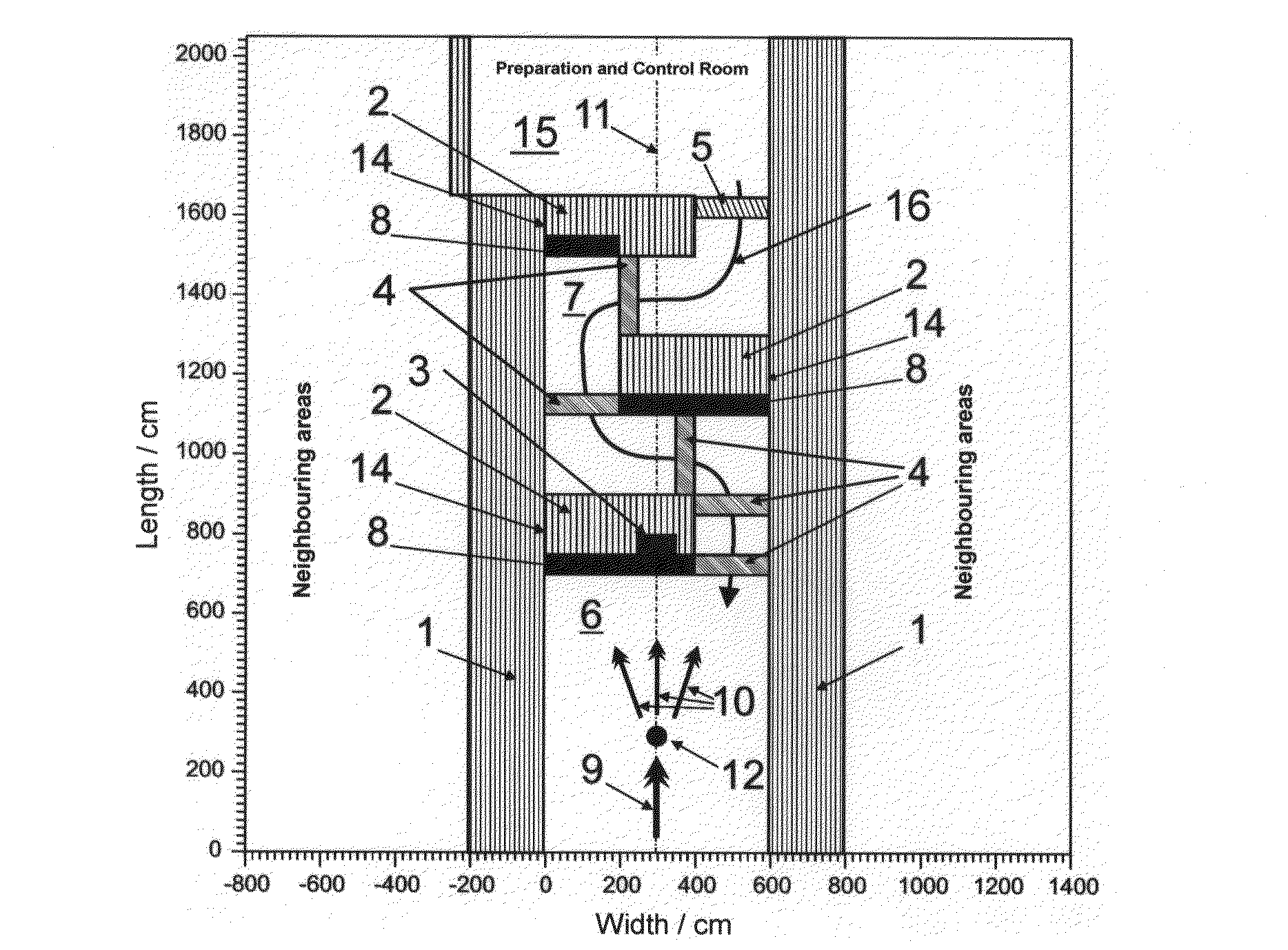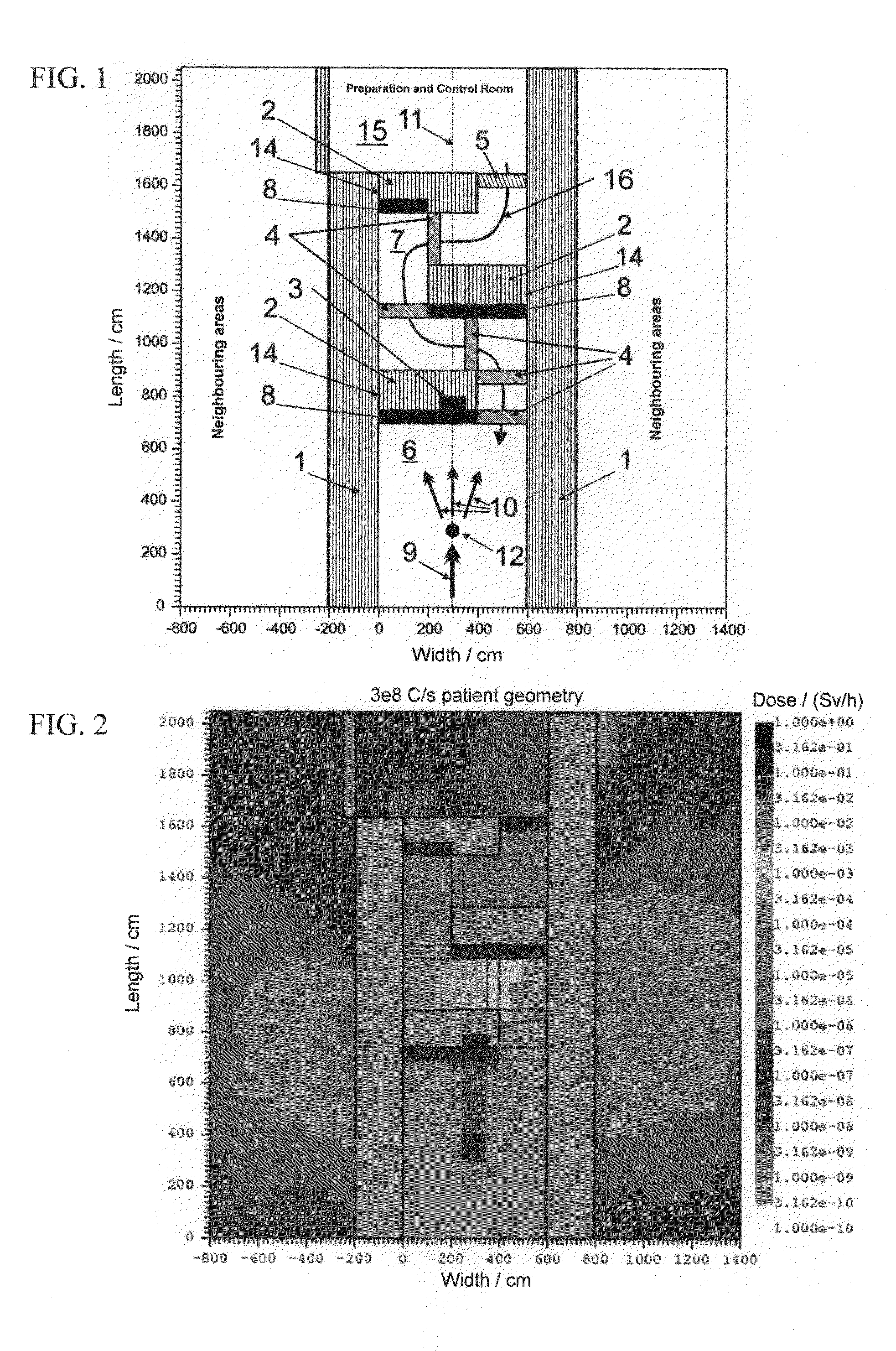Screened chamber for ion therapy
a technology of ion therapy and chambers, which is applied in radiation therapy, therapy, nuclear reactors, etc., can solve the problems of secondary radiation produced by ion accelerators, biological and other targets, and materials such as lead or iron used for shielding x- and gamma radiation that are not particularly suitable to absorb or moderate neutrons, etc., to achieve less space, constant interaction probabilities, and constant effective cross-section
- Summary
- Abstract
- Description
- Claims
- Application Information
AI Technical Summary
Benefits of technology
Problems solved by technology
Method used
Image
Examples
Embodiment Construction
[0070]The heavy ion therapy installation is operated with either protons, carbon ions, neon ions or heavy ions forming the primary beam for the cancer treatment of patients, thereby producing secondary neutron radiation. The reason for this is the described nuclear physical fragmentation process of the primary ions or of the target nucleus during the moderation procedure of the primary ions in the material, in particular in the patient's tissue being irradiated. For example, per carbon ion with the energy of 400 MeV per nucleon on average 5 neutrons are released. In addition to the beam transportation system from the synchrotron to the patient which involves minimal losses, particularly the area 6 of the patient treatment is a location with relatively high neutron radiation dose.
[0071]With the arrangement of such therapy installations, the access to the treatment area 6 is located in some cases opposite the primary beam 9 along the beam path 11, i.e. in zero degree forward direction...
PUM
 Login to View More
Login to View More Abstract
Description
Claims
Application Information
 Login to View More
Login to View More - R&D
- Intellectual Property
- Life Sciences
- Materials
- Tech Scout
- Unparalleled Data Quality
- Higher Quality Content
- 60% Fewer Hallucinations
Browse by: Latest US Patents, China's latest patents, Technical Efficacy Thesaurus, Application Domain, Technology Topic, Popular Technical Reports.
© 2025 PatSnap. All rights reserved.Legal|Privacy policy|Modern Slavery Act Transparency Statement|Sitemap|About US| Contact US: help@patsnap.com



